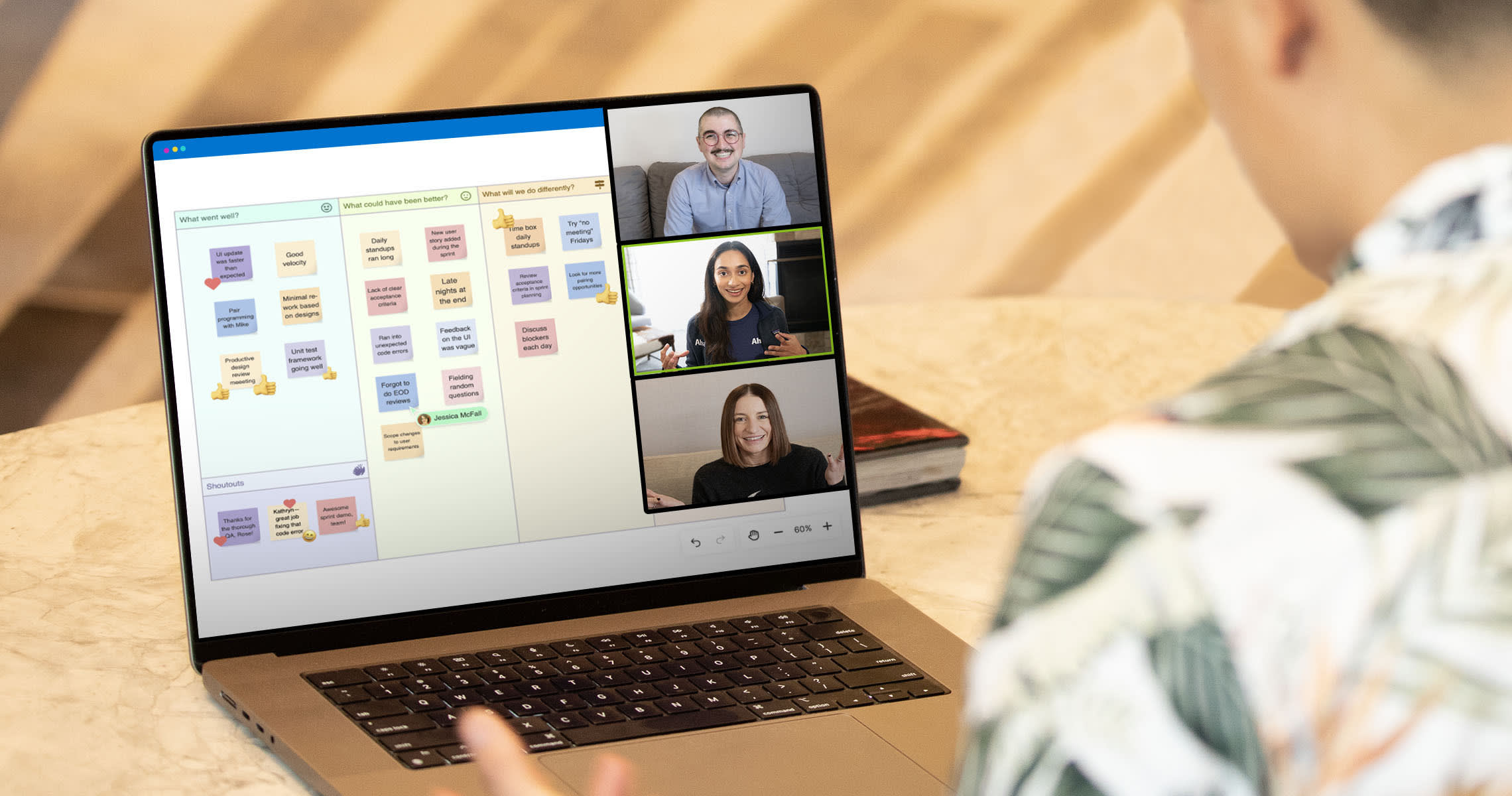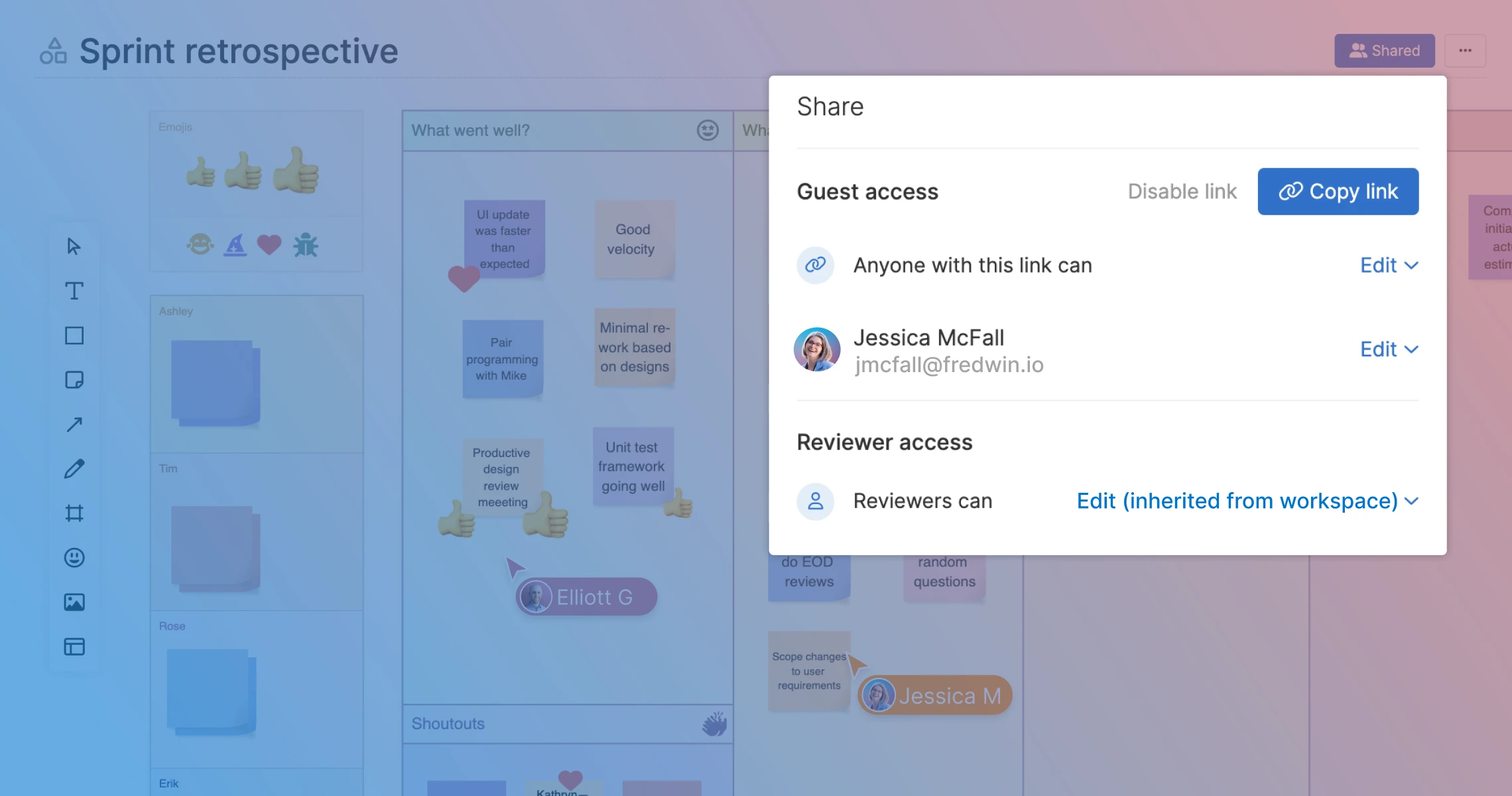
When product teams should collaborate in real time vs. asynchronously
How often do you collaborate in real time vs. asynchronously? We recently posed this question on LinkedIn and nearly 200 folks replied. Roughly a quarter reported that you collaborate mostly in real time, a third said mostly asynchronously, and 39 percent were an equal mix. Remote teams today clearly rely on a variety of methods to communicate and accomplish their goals. But I wonder if folks would say they have found the "right" mix.
Finding the appropriate balance is especially important for remote teams who want to move fast and achieve together.
Most people generally know what real-time vs. asynchronous collaboration means — but let's agree on definitions. Real-time work happens at the same time, usually in face-to-face video meetings or simultaneous online chats. Asynchronous collaboration occurs at different times, when each teammate is ready to contribute and respond. Typically this happens in online notes, whiteboards, or threaded comments.
If you have worked remotely for any amount of time, you likely gravitate to one method or the other for certain types of work. For example, you may rely on live calls or real-time sessions for creative or complex efforts such as interactive brainstorming or retrospectives. Conversely, you may tackle more routine tasks asynchronously. Think reviewing shared documents, building a joint presentation deck, or catching up on email or chat threads.
How deeply do you actually think about when to choose a particular approach? After all, it can be tempting to opt for whichever seems easier or is the team's go-to preference.
Our team at Aha! has been entirely remote since we began more than a decade ago. We are used to being distributed across time zones (up to eight of them now) and negotiating how and when to work together. We find that our customers and our own team often produce better work by using notes, whiteboards, and other documents in Aha! software both live and separately. Activities like prioritization sessions in particular benefit from a mix of on-the-spot discussion and solo work.
If you are trying to determine whether something should happen live or at separate times, asking questions like the ones below can help you choose the right method. Here are a few areas to consider:
Impact
How much value will this work deliver?
Consider the potential impact you will create for customers, the business, and the team. Sometimes you will know this intuitively; other times you may want to sketch the effort vs. impact on a matrix.
For higher-value work, schedule real-time sessions in conjunction with working asynchronously in between to keep momentum going.
For lower-value work, consider leaning on asynchronous collaboration with fewer or even no real-time sessions.
Urgency
How time-sensitive is this work?
It is not always possible to ideate, plan, or create documentation when you feel most inspired. To make quick decisions and give immediate replies so that work can progress, sometimes real-time is the right choice.
For more urgent work, jump on a live call or have a discussion in real time. Make sure you come out of the meeting with a clear direction and next steps.
For less urgent work, give teammates the opportunity to contribute ideas and thoughts on their own time (keeping deadlines in mind).
Complexity
How challenging or unfamiliar is this work?
Embarking on novel projects, collaborating with multiple groups in the organization, or interviewing new customers — these are all efforts that may require more initial investment. Sometimes it is more efficient to have a real-time session in these cases. Especially when you anticipate lots of questions, comments, and many people and teams being involved.
For more complex work, schedule a real-time discussion to make sure everyone is aligned and the scope is clear upfront. Then let teammates have the time and space for deep thinking on their own.
For less complex work, try asynchronous collaboration. You can always hop on a call if necessary.
Connection
How important is it to build and strengthen team relationships while accomplishing this work?
Camaraderie and rapport is vital to achievement. If the team could use more face-to-face bonding time, go ahead and call a live meeting. For example, some sessions can be more fruitful when folks build upon each other's energy and perspectives in the moment. Giving (or receiving) feedback can also be easier when everyone can see visual cues and hear tone of voice over a call. When you do meet live, prepare with a meeting agenda and then document your discussions with a meeting notes template to stay on track.
For work that will benefit from greater connection, talk live on a video call.
For work that relies more on individual effort, work asynchronously or communicate in real time over chat.
Each person has unique needs and preferences for how they work best. The goal is to find an approach that maximizes the team's productivity and happiness.
Whether you are working in real time or asynchronously, you need to cultivate the right mindset — trust, transparency, and a commitment to delivering real value over the long run. Build in enough connection time and solo focus time to do this. Be nimble and adjust your collaboration approach when needed. This is how the team can achieve great things together.
Collaborate, ideate, and build better products together — try Aha! software today.




